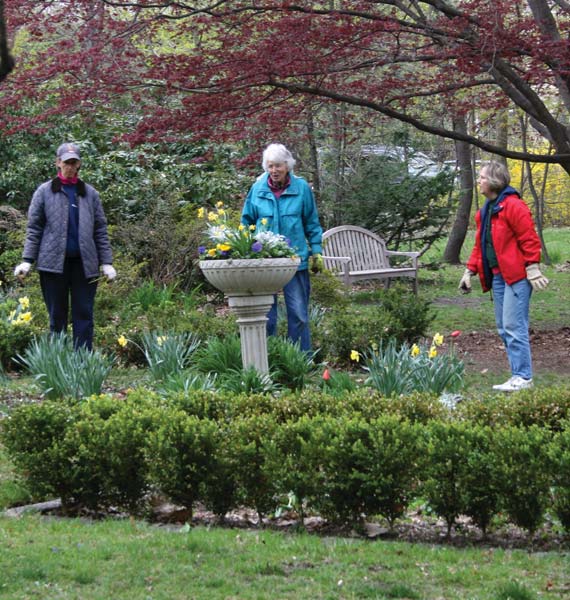↓ Download the Full Newsletter (PDF)
Sanctuary Birds: In Your Face or in a Hiding Place?
by Fred Bouchard
Fred conducted morning bird walks at Hall’s Pond during April and early May.

WHEN YOU’RE BROWSING through the Sanctuary over Spring and Summer, some of its avian denizens are obvious by their large size or busy activity. On the open water are the nesting Canada Geese and Mallards. The 4-foot Great Blue Heron is our hoary mascot, the ‘old man of the pond.’ On the Beacon Street side, a gaggle of House ‘Sparrows’ (really émigré weaver finches) chirpily greet you. Then there are constantly moving, blackand- white flycatchers: the tail-bobbing Eastern Phoebe is seen over the water nabbing mayflies and dragonflies, then homes in on the same perch. Another, Eastern Kingbirds, are screechy treetoppers which flit over the top of the pond.
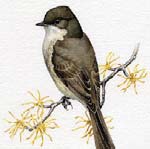
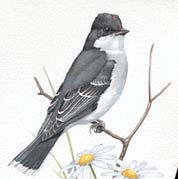
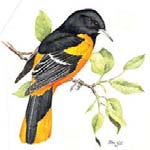
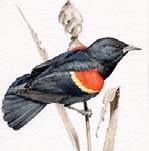
Baltimore Orioles are not only nattily garbed in orange and black, but are among our accomplished songsters. Seemingly everpresent are Red-winged Blackbirds (the allblack male has a red epaulet and sings ‘conk-a-ree’ from the reed patch) and grackles (glossy, yellow- eyed, and long tailed.) When you look up, you’ll see the occasional crow or Red-tailed Hawk— sometimes the former harassing the latter—and soaring gulls (Herring or Ring-billed) and cormorants commuting between the Emerald Necklace and the Charles River.

But smaller birds may initially elude the eye; these take a little stealthy stalking, preferably with a quiet step and ready binoculars. Sparrows tend to be brown and streaky, with many variations: most are the resident Song, but migrating through are the common Whitethroated, are rarer Whitecrowned, Swamp, and Lincoln’s. Hermit, Swainson’s and Wood Thrushes sing sweetly but lurk in the uplands, unlike their flamboyant and innumerable cousins, the robins. Then there are the 20+ species of 5″ warblers—brightly marked, full of unique songs, but (alas!) mostly high in the tall oaks and maples where Amory Woods meets the Pond. But some regularly show up (and may nest) pondside: Common Yellowthroat, Northern Waterthrush, Wilson’s Warbler, and the flashy American Redstart.

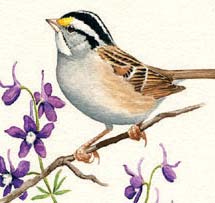
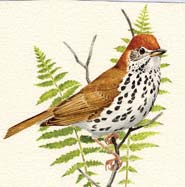
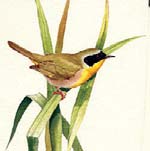
This spring we’ve had a lucky incursion around Boston of waxwings. The handsome pearly gray Cedar, with its yellow and red touches and black face and crest, flocks to fruiting trees (check the birch saplings by the white house). Pick through them carefully (at any grove of crabapples or ornamental cherries) for the slighty larger, graybreasted and rusty tailed Bohemian, a chance of 1 in 100; many have wintered here from the Northwest. Both are miraculously beautiful.
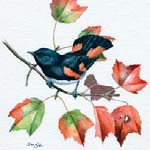
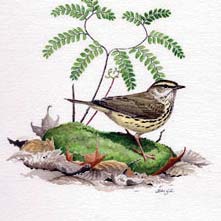
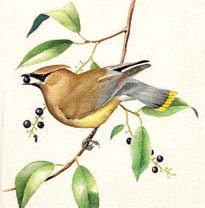
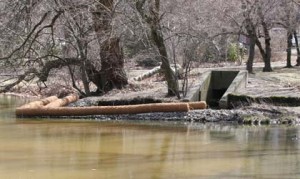 Continuing Improvements to the Restoration Project
Continuing Improvements to the Restoration Project
Recently, visitors to the Hall’s Pond sanctuary may have noticed some changes to the stormwater structure known as the sediment fore-bay. The structure was constructed as a component of the Hall’s Pond Restoration Project and serves an important function in capturing sediment from stormwater before it discharges to the Pond.
Over the past few years the weight of the structure has caused some settling. This is not terribly surprising given the history of the Pond and its soft bottom. The recent work consisted of installing a new row of gabions, with Bio-logs on top. This work restores the structure to its original height and will continue to protect the Pond by capturing sediment before it enters the Pond.
Thomas D. Brady
Conservation Administrator/Tree warden
Town of Brookline
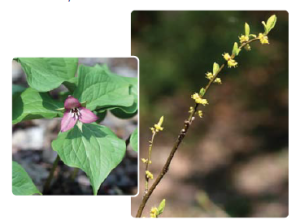
work day in the Hall’s Pond area has already come
and gone, but by mid-May we may still see the
Northern Spicebush (Lindera benzoin) in full
bloom, which was added to the Amory Woods
area. Both photos at the Sancturary, this April.

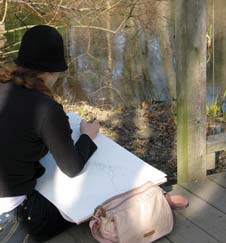
Enjoying Nature Safely at Halls Pond
WEST NILE VIRUS is a preventable disease. It is a Mosquitoborne virus and thus is carried and spread by mosquitoes. It is an endemic disease and has therefore been detected in the area for at least 6 years. The Town of Brookline is quite active in the tracking and testing of mosquitoes and birds in the area. In early summer, many birds are tested for West Nile Virus (WNV) to see if and how prevalent the disease is in our area. The Hall’s Pond sanctuary also has mosquito traps that are used for collection throughout the summer months.
According to Alan Balsam, Director of the Health Department for the Town of Brookline, these mosquitoes are collected and tested for WNV and EEE (Eastern Equine Encephalitis). If there is a concern, the town issues an alert to the community via flyers, phone calls and their website. If necessary, the use of the local Police Civilian’s Response Team or Medical Reserve Corps would be called in to action. So far this has been unnecessary. The Town of Brookline has informative links to this and much more information on their website www.town.brookline.ma.us. To find this information, go to the website and look under the Health Department, then follow the link to the West Nile Virus section. The information on the Town web page is also available in Chinese and Russian.

 Hall’s Pond is a nature sanctuary so you will find mosquitoes. There are traps set for the collection of mosquitoes for further testing. The installation of aeration pads at the bottom of the pond last year keeps the water moving and filtered. To avoid the spread of mosquitoes, clean up standing water in your yard and neighborhood and the use of approved insect repellent when outdoors will lessen your chance of contracting this disease. It is also suggested you plant citronella or lemon grass in your yard, nature’s own indoor/outdoor natural protection against biting mosquitoes.
Hall’s Pond is a nature sanctuary so you will find mosquitoes. There are traps set for the collection of mosquitoes for further testing. The installation of aeration pads at the bottom of the pond last year keeps the water moving and filtered. To avoid the spread of mosquitoes, clean up standing water in your yard and neighborhood and the use of approved insect repellent when outdoors will lessen your chance of contracting this disease. It is also suggested you plant citronella or lemon grass in your yard, nature’s own indoor/outdoor natural protection against biting mosquitoes.
SPRING and early summer bring explosive growth to Hall’s Pond— so much, so fast, that it is hard to notice what is happening. Orioles migrate in, and suddenly, we see them as a glint of orange and black sweeping down and across the pond. Chimney swifts and tree swallows twitter as they circle the pond, catching insects in mid-air. Even year-round birds like cardinals and chickadees change their tune. They sing courting songs, chase after each other, or slip past without a sound.
Birds can be almost comically secretive about their nests.You might see a bird carrying a bit of plant in its beak and know that it is building a nest.You might see a bird carrying uneaten insects and know that it is feeding young. Yet it sneaks around you, stops at decoy perches, eyes you, and then slips into a wellconcealed place. Even then, you might not see the nest.
Watch for insects, too. They’re everywhere—that’s how the birds are able to find enough food for themselves and their young. Look under new leaves, or in rolled-up sections of leaves for tiny caterpillars. Look in the furrowed bark of tree trunks and on the wetland plants. Count how many different kinds of flying insects you can find—as the summer wears on there should be more winged adults, and fewer visible larva. They need to ensure their specie’s survival for next summer.
The supermarket of life at Halls Pond is now fully open for the summer season.
